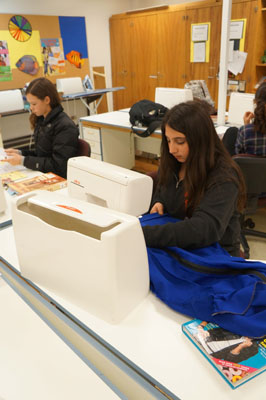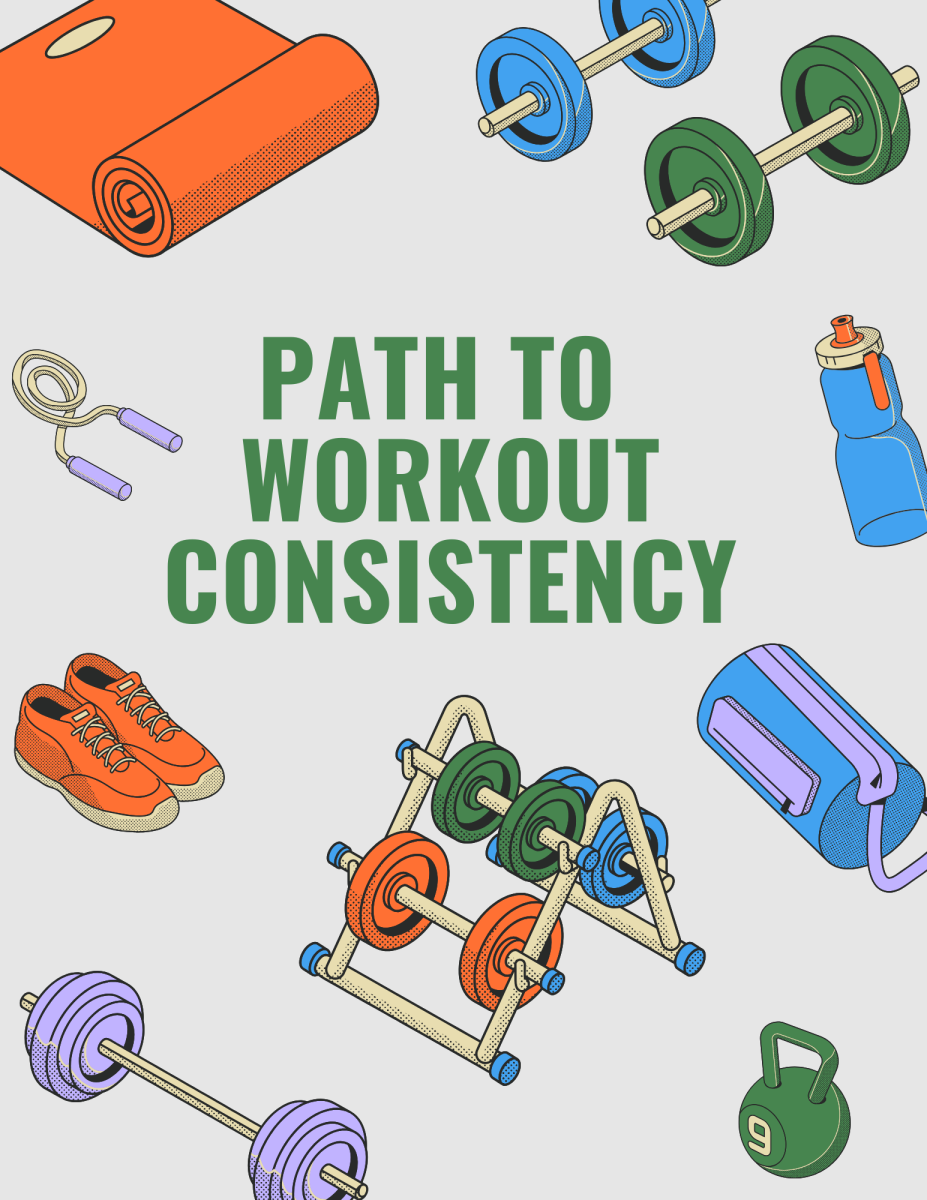“This isn’t clay, this isn’t just pencil and paper, there’s fabric involved- texture, something three dimensional,” Jean Simmons, Fashion and Apparel teacher, said, explaining the qualities involved in the art.
According to Simmons, the main concept she wants students to grasp from Fashion and Apparel is for students to express themselves through fashion and be able to handle being stuck in difficult situations.
“The main purpose is to allow a student to use tools and fabrics for self expression,” Simmons said. “Basically, I approach it as you are an artist and you need another medium to work with […] Unlike creative writing class, you can’t just tear it up, throw it away and erase it; you actually have to unstitch it so you’re stuck with your problem.”
Fashion and Apparel student, junior Christina Coleman, enjoys the creative aspect and mental relaxation that’s involved with the class.
“I like it a lot,” Coleman said. “It’s a very hands on class, so it kind of gives you a mental break, but at the same time you get the opportunity to be creative.”
According junior Amy Kuply, Fashion and Apparel student, this class involves a variety of projects. The class has recently been in the process of doing, what Kuply considers, her favorite project.
“In class we usually have a project to do or we learn about the different kinds of textiles, ecetera, and we also watch videos about fashion,” Kuply said. “My favorite project so far is probably the project we’re doing right now, which is making a gift for someone. For my project I’m making a sweater for my puppy.”
One skill students learn in this class is how to sew, but according to Simmons, the class doesn’t only focus on sewing.
“It’s called fashion and not just sewing because the other element that I add is understanding wardrobe, wardrobe planning, what colors and things look best on an individual, fashion trends and also some sketching,” Simmons said. “So all of that is just shoved into [Fashion and Apparel] 161.”
According to Kuply, although the class can at times be challenging because of the intricacy involved with sewing fabrics, Kuply still feels the class is laid-back because Simmons makes sure to give the students plenty of time to work in class.
Simmons also takes students on a number of field trips, which according to Coleman, help students consider fashion as a career.
“It’s definitely had me thinking about it,” Coleman said. “We went to a field trip to Columbia College, and we saw other students [working in fashion], and we got to see how it’s a lot of work. But it definitely had me thinking that it could be a possibility for my future.”
Students also have the choice of taking the next level of the class, known as Fashion and Apparel 2.
“In Fashion and Apparel 2 […] I assume they already know basics of sewing, so they have to fine tune their skills in how to read a paper pattern and how to construct a garment according to directions,” Simmons said. “Which is a lot because you have to interpret language, sewing language and kind of have to read a map.”
There are two other levels after Fashion and Apparel 2. According to Simmons, these levels are highly individualized because the curriculum is built on what the student wants to do and students are responsible for their own fashion collection.
With Simmons retiring next year, sophomore Grace O’Malley, Fashion and Apparel 2 student, is upset to see to see her leave.
“I really love her,” O’Malley said. “She’s one of the cutest people I know and I’m going to be so sad when she retires, but she’s a really really good teacher, and she’s always willing to help you.”
Although Simmons is sad about retiring this year, she is still happy to have experienced teaching Fashion and Apparel at South.
“I’m just pleased that I’ve had the opportunity to be here now, because who knows how long something like this will be able to serve our students- it could go away,” Simmons said. “But I hope it doesn’t because it allows people to be creative. And that’s going to be the future of our American work population: the fact that we can be creative and good problem solvers, not just copy-catters.”




![LEFT, RIGHT, CENTER: Members of the Drama Club gather in the drama room to block their scenes for their incoming production as part of the Glenbrook Story Project. [Left to right] sophomore Riley Talbot, senior Lukas House, and senior James Dravenack act out a scene called Dragon House Carnival.](https://theoracle.glenbrook225.org/wp-content/uploads/2025/05/MG_4193-800x1200.jpg)








